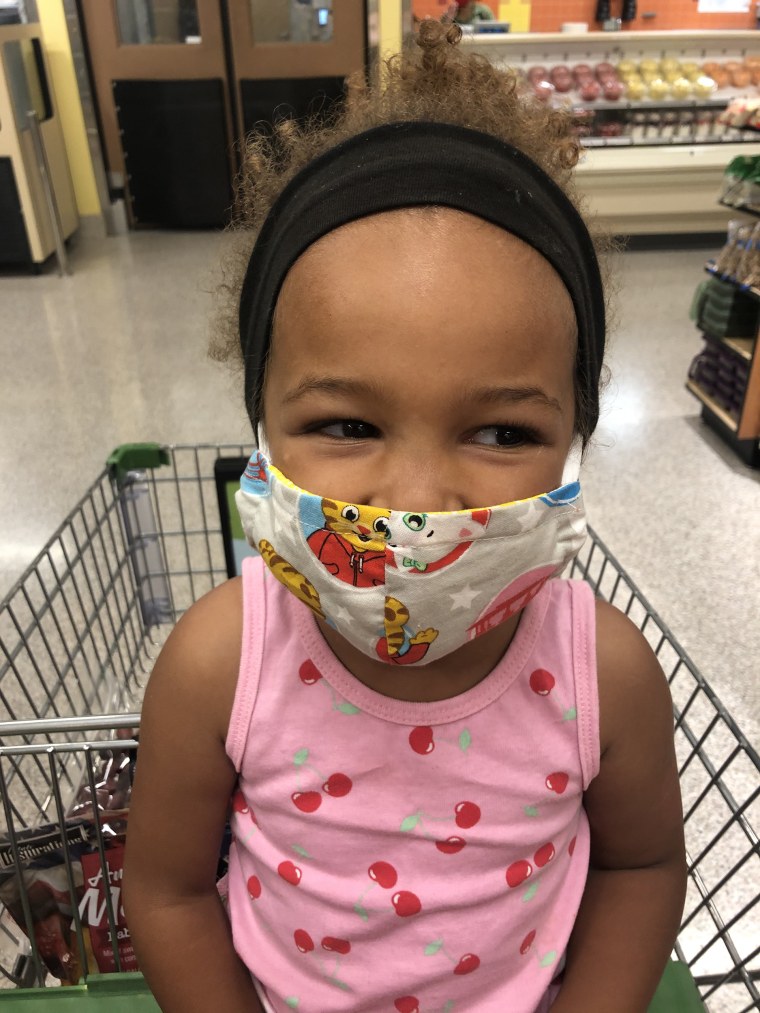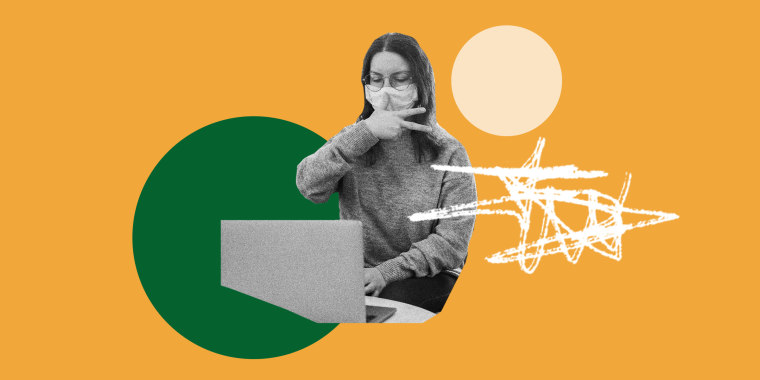James and Amy Ferrell's daughter was nine months old when they learned that she'd been born with bilateral sensory neural hearing loss. In other words, she was deaf in both ears.
"She was the first deaf person we'd ever met," Amy Ferrell told TODAY.
Right away, they were determined to do whatever they could to help her. Their family began to learn American Sign Language. They found a deaf mentor and joined a deaf church, a place where their daughter, Charlee, who turns 3 years old later this month, gets to be around other native signers.
"(The church) is how Charlee accesses natural signing from people who have signed their whole lives, as opposed to people who are signing as a second language, like us," said Ferrell, whose family lives near Nashville, Tennessee. "They're so much more visual. Our language skills just aren't there. And Charlee flourishes when she's around them."

Now, as the COVID-19 pandemic continues, that's all on hold. Church is now virtual. So is story time with their deaf mentor. Ferrell's mother's ASL lessons were canceled, as was the summer camp where Charlee's big brother Logan had been learning to sign.
"It may sound small, but he's four — that's a critical learning time," Ferrell said. "So the ability of people who love her to learn sign language in person, which is really how you learn it best, has been really impacted."
The struggle to communicate
Across the country, people who are deaf or hard of hearing have been feeling the effects of the pandemic in myriad ways, with communication perhaps being the most obvious hurdle.
Masks are a challenge: It is impossible to lip-read when someone is wearing one. (Clear masks may be one solution, although they're not perfect.) Signing is affected, too, since the language is not simply about the signs the hands makes; it also relies on facial movements and expressions.

Charlee's parents pulled her out of daycare after she grew frustrated with not being able to understand her teacher through her mask — which they acknowledge is a privilege since they are both able to work from home, one that other parents may not have.
Some deaf people have found that hearing people are quick to pull down their masks in their presence, which can be helpful from a communication perspective, but risky when it comes to the virus, as infection rates have begun to rise again.
Safe alternatives are minimal. People may be hesitant to share a pen so that a deaf person can write a note, or to get close enough to someone to read a note they have typed on their phone, for example.
When technology fails
While Zoom meetings and virtual hangouts are undoubtedly a key part of pandemic life, technology isn't always optimized for people who are deaf or hard of hearing.
In an essay for the BBC, author Sarah Novic, who is deaf, writes about how dinner table syndrome, a common occurrence in which deaf people are excluded from a conversation in a group of hearing people, is actually worsening in our new virtual world.
"Video conferencing platforms are actually just another dark bar, another dinner table," she wrote. "However, unlike the table at the pub, disengagement isn't an option as the majority of our lives are now played out on screens."
In some ways, the deaf community is a step ahead of many of us when it comes to video calls, having early on realized the benefits of video over audio-only calls. But video calls are still no match for in-person communication. Closed captions are not always provided; or, if they are, they're often difficult to set up or wildly inaccurate. Connections can falter, making signing and lip reading unreliable, especially in group meetings.
"Lip reading during a work meeting is impractical for most deaf and hard of hearing employees due to the number of people typically involved in a meeting," Howard A. Rosenblum, CEO of the National Association for the Deaf, told TODAY in an email. "Lip reading might work for some deaf and hard of hearing employees when there is a one-on-one meeting, but for many others it is not effective at all regardless of the size of the meeting. This is true whether the meeting is in-person or virtual."
If there's a sign language interpreter in a virtual meeting, the deaf person must pin that person's box to their screen, missing out on seeing the rest of the group. And, of course, there often isn't an interpreter. Only last month — more than half a year into the pandemic — a judge ruled that the White House must have sign language interpreters at its COVID-19 briefings.
That struggle to get information isn't only frustrating: It can be dangerous, too. The National Association of the Deaf, which filed the lawsuit that prompted the judge's ruling, has been advocating for interpreters and accurate captions in all emergency briefings. On its website, the NAD also points out how deaf people are particularly vulnerable if they get sick and have to be admitted to the hospital, where they may struggle to communicate with the doctors and nurses, and may not be able to bring a friend or family member to help, due to stricter visitor policies.
A need for community
Most deaf people say community is a hugely important aspect in their lives — but right now, being together isn't always possible.
Like many universities across the country, Gallaudet University, a school for deaf and hard of hearing students in Washington, D.C., has temporarily shifted to virtual learning. That means that many of its students are back home with their parents, and for some, the return to the "hearing world" has been a difficult one.
"I did not realize how comfortable I had gotten having access all the time at Gallaudet, a place where everyone signs and communicates the same way I do," senior Marlee Brambila told TODAY in an email.
Separated from their community, they're experiencing a rise in dinner table syndrome, too.
"During any family gathering, and not only dinner, it is very difficult to communicate with family and friends," said Sara Khan, also a senior. "I am the only deaf child in the family. They don't communicate with me much."
While Gallaudet students are at an advantage compared to deaf students taking virtual classes with students and professors who do not share their primary language, the lack of in-person togetherness still takes a toll.
"One of our primary tools of resilience is to come together in our shared signing community at cultural events and gatherings to support and re-energize each other," Roberta J. Cordano, the university's president, said in an email. "Gathering and basking in our social and language vibrancy is a critical part of the deaf experience. The pandemic has taken that away from all communities, including us for now."

